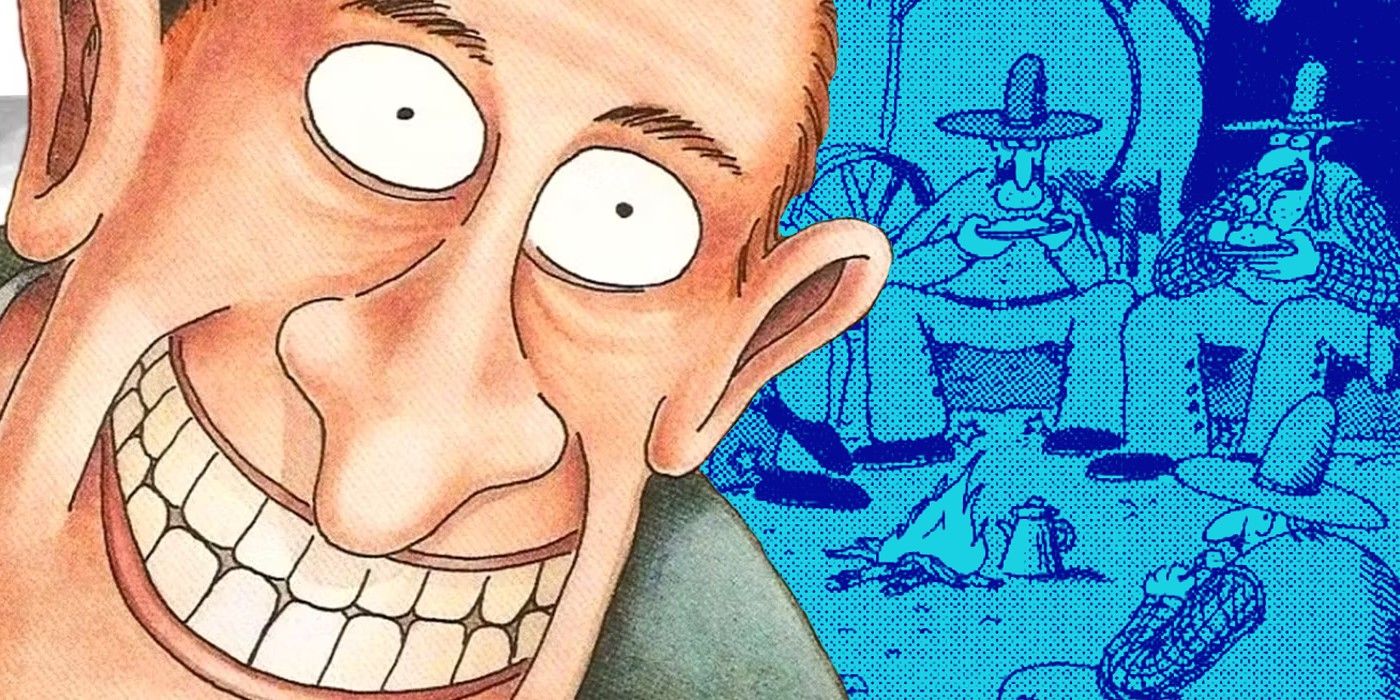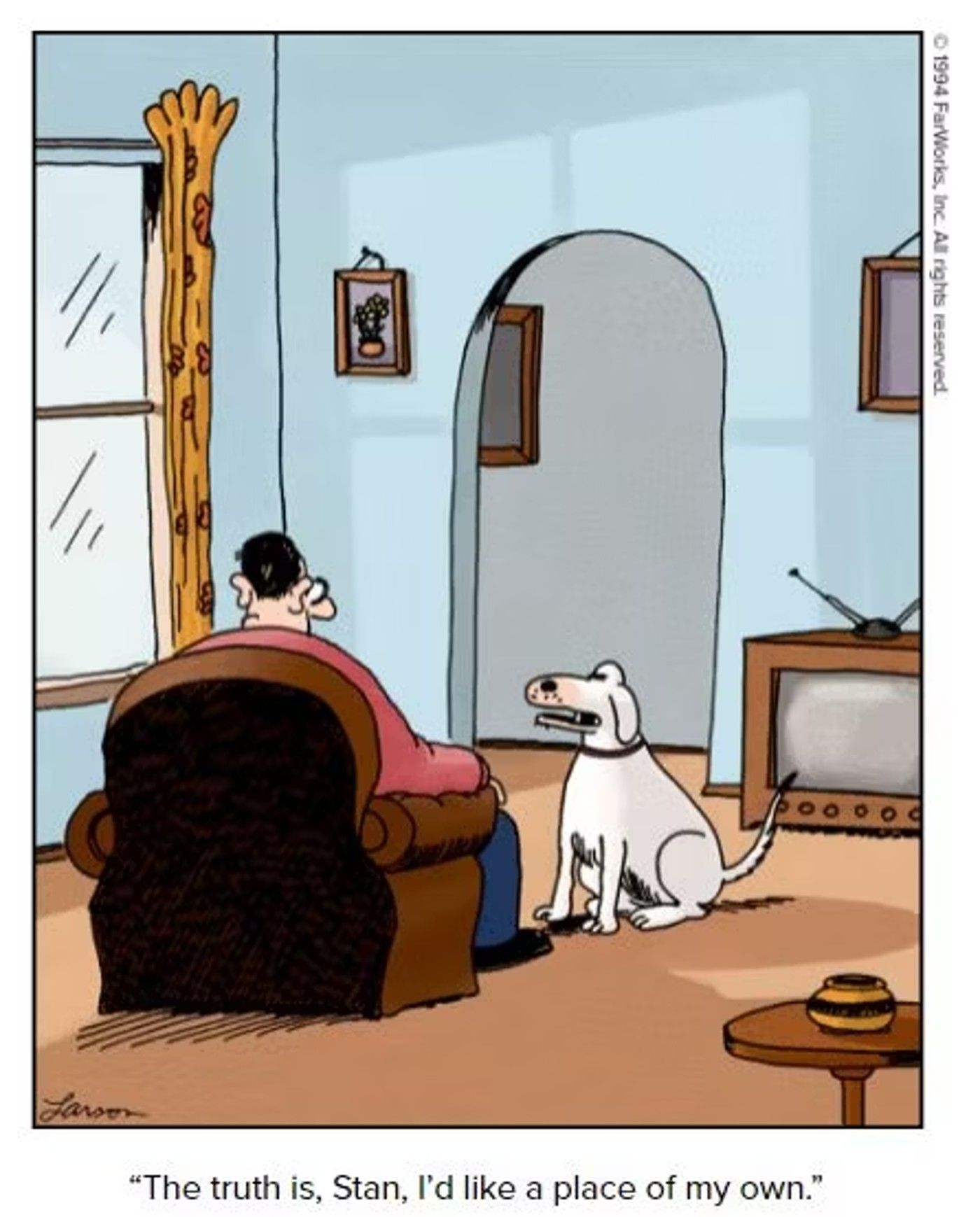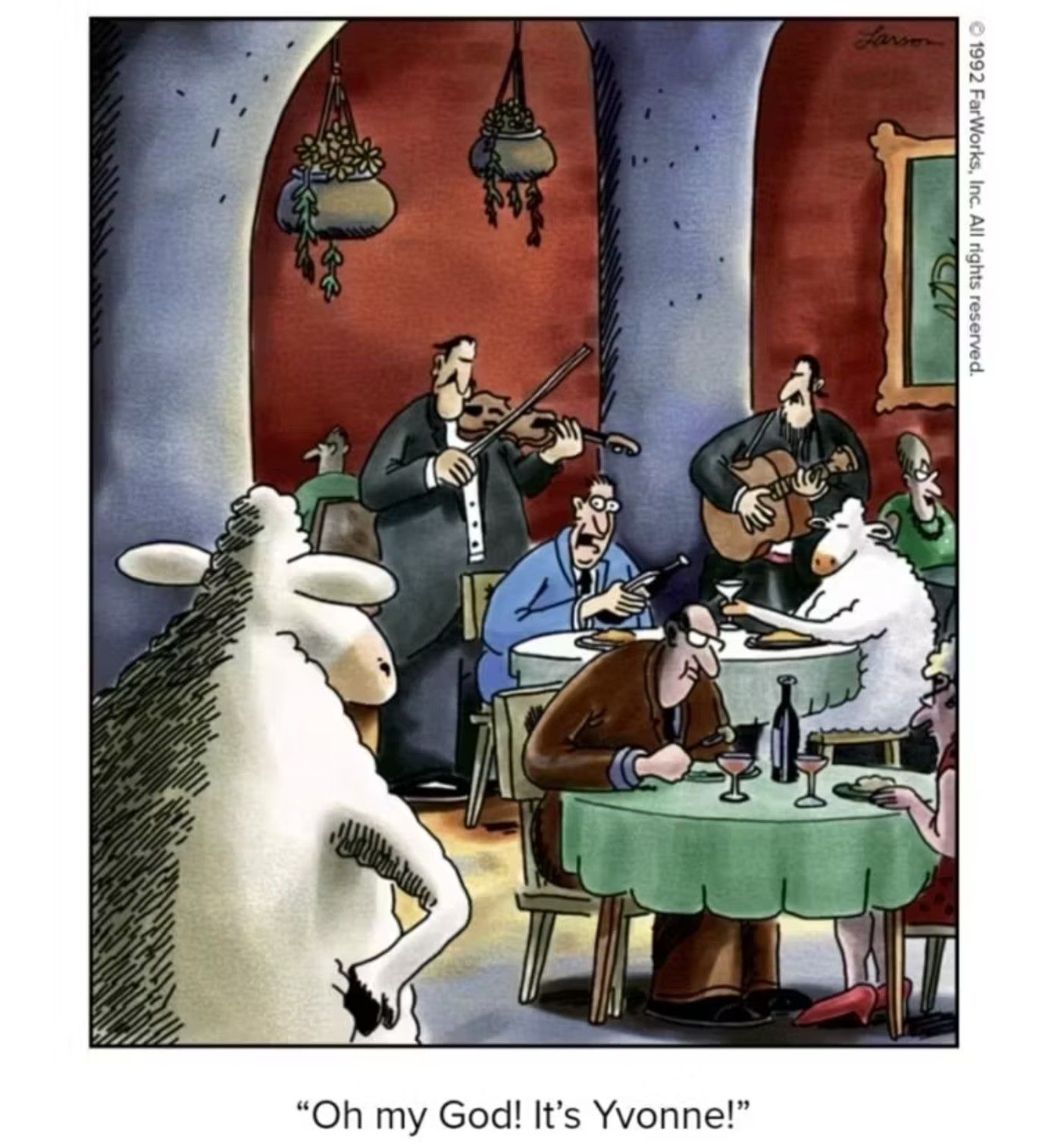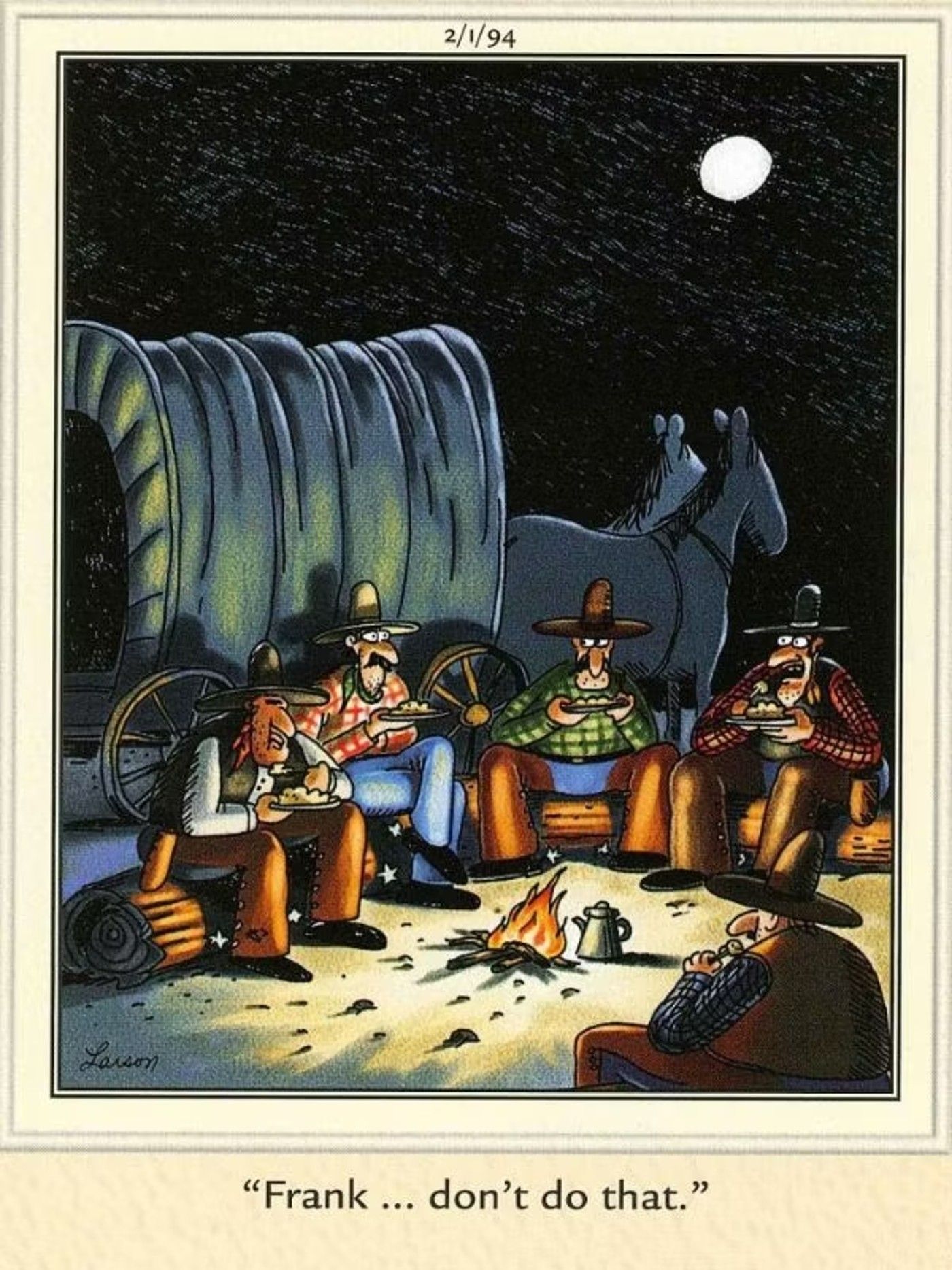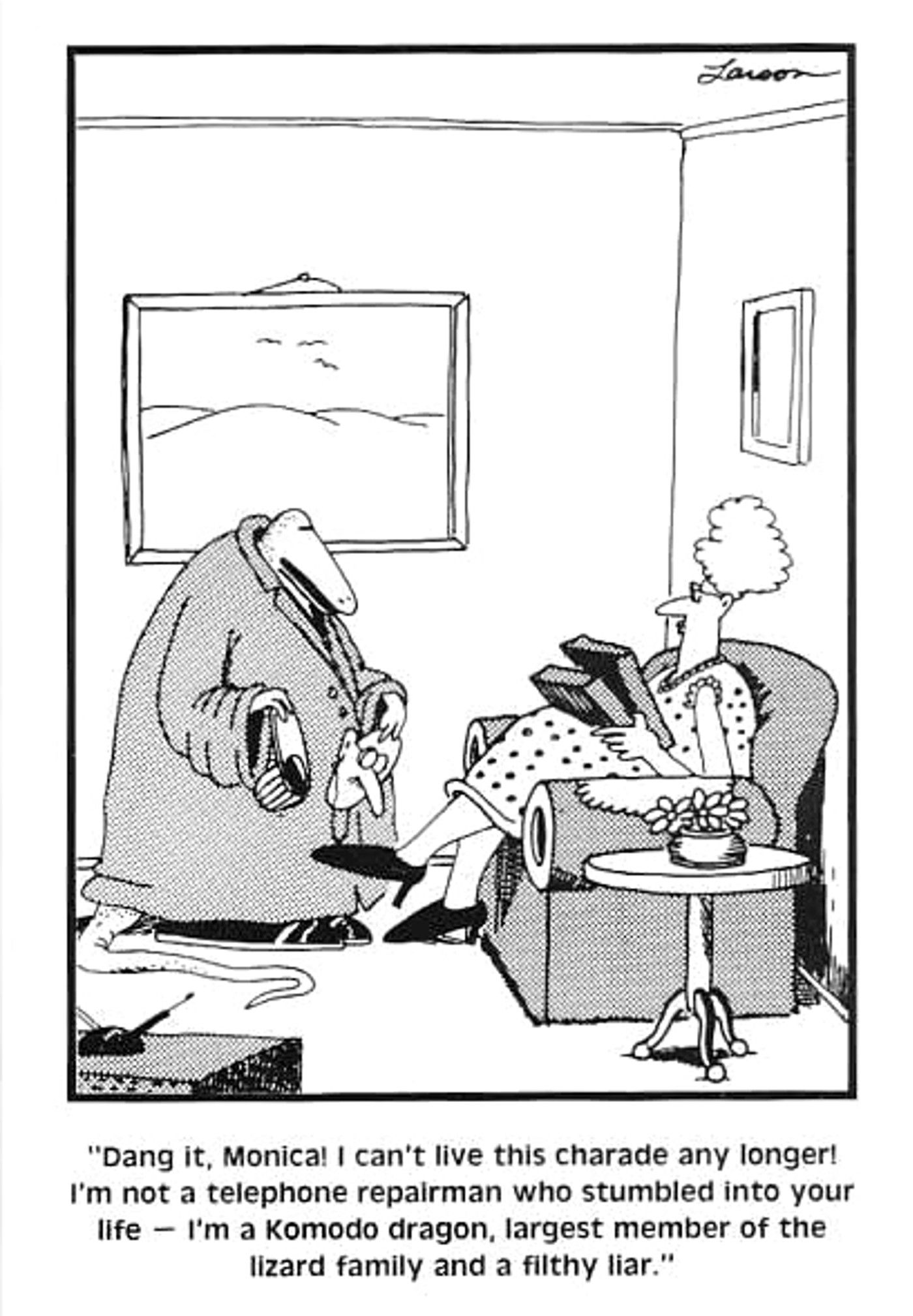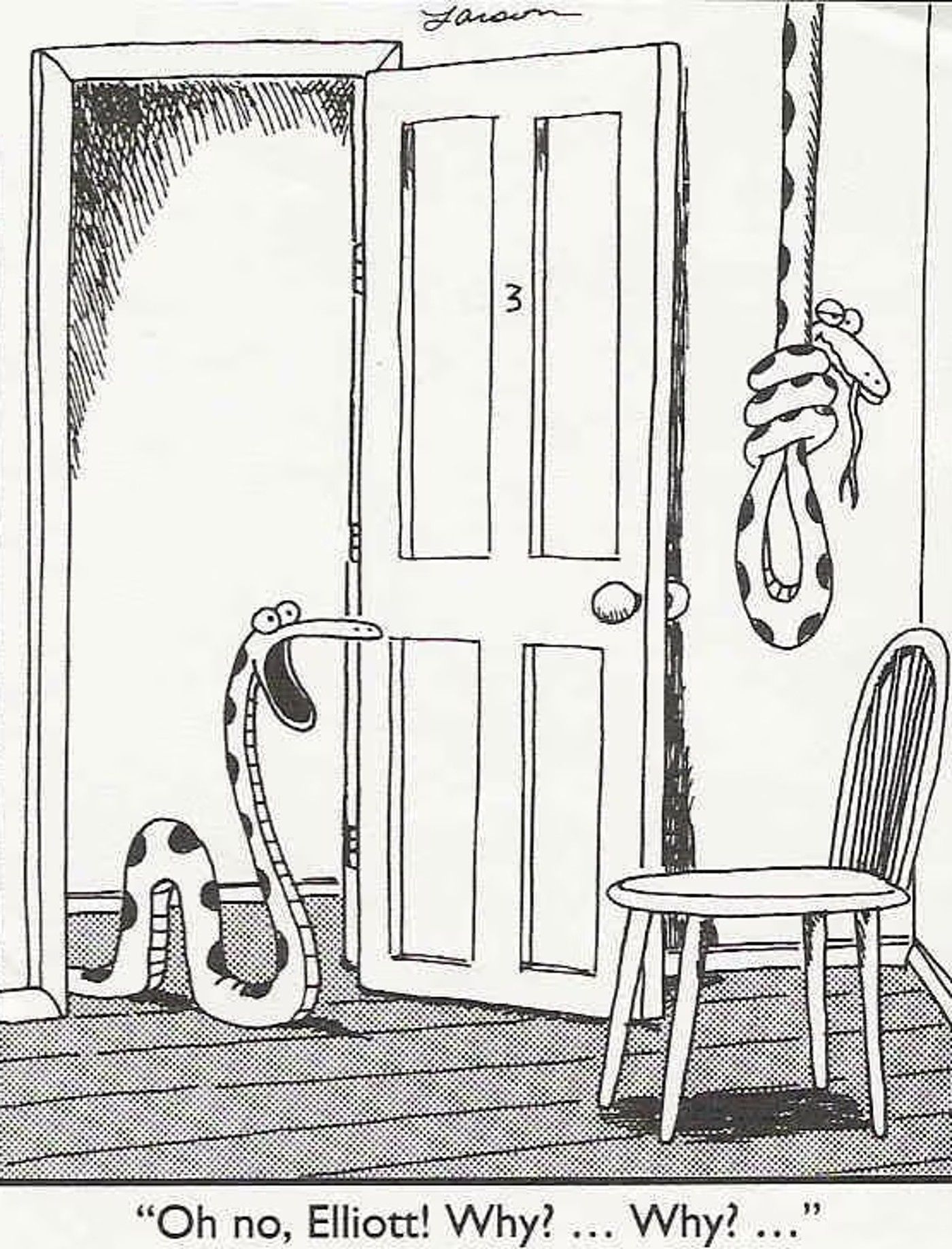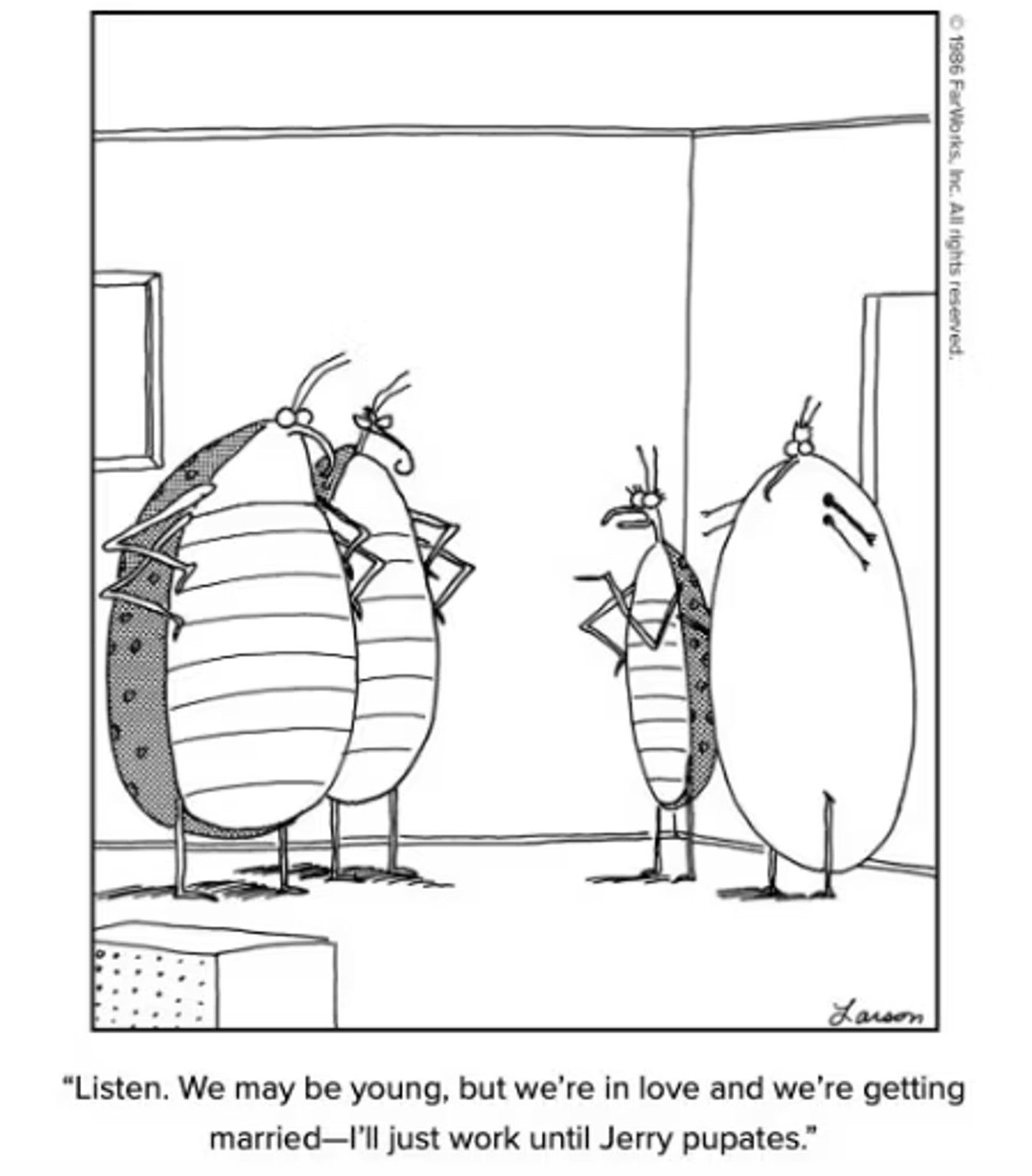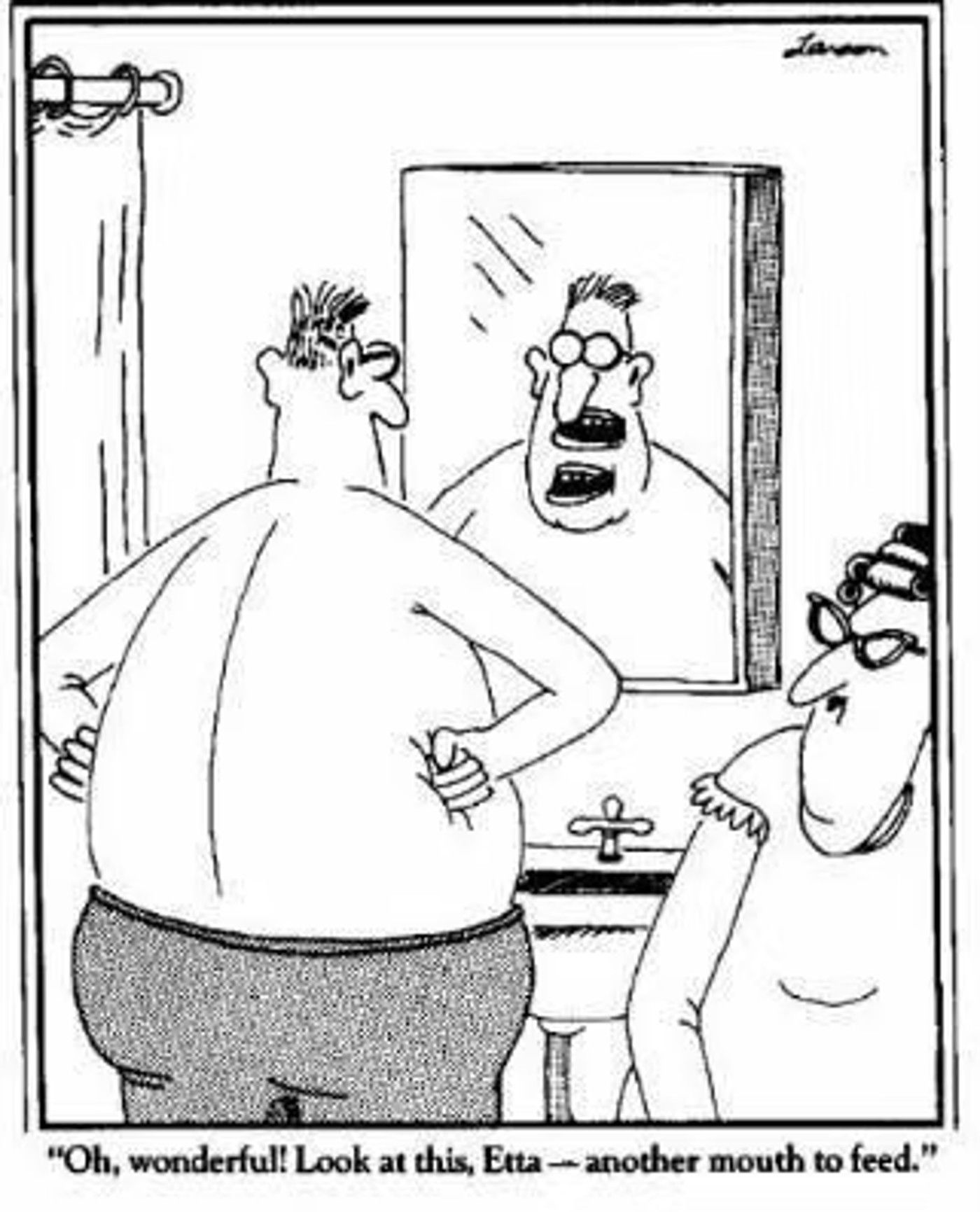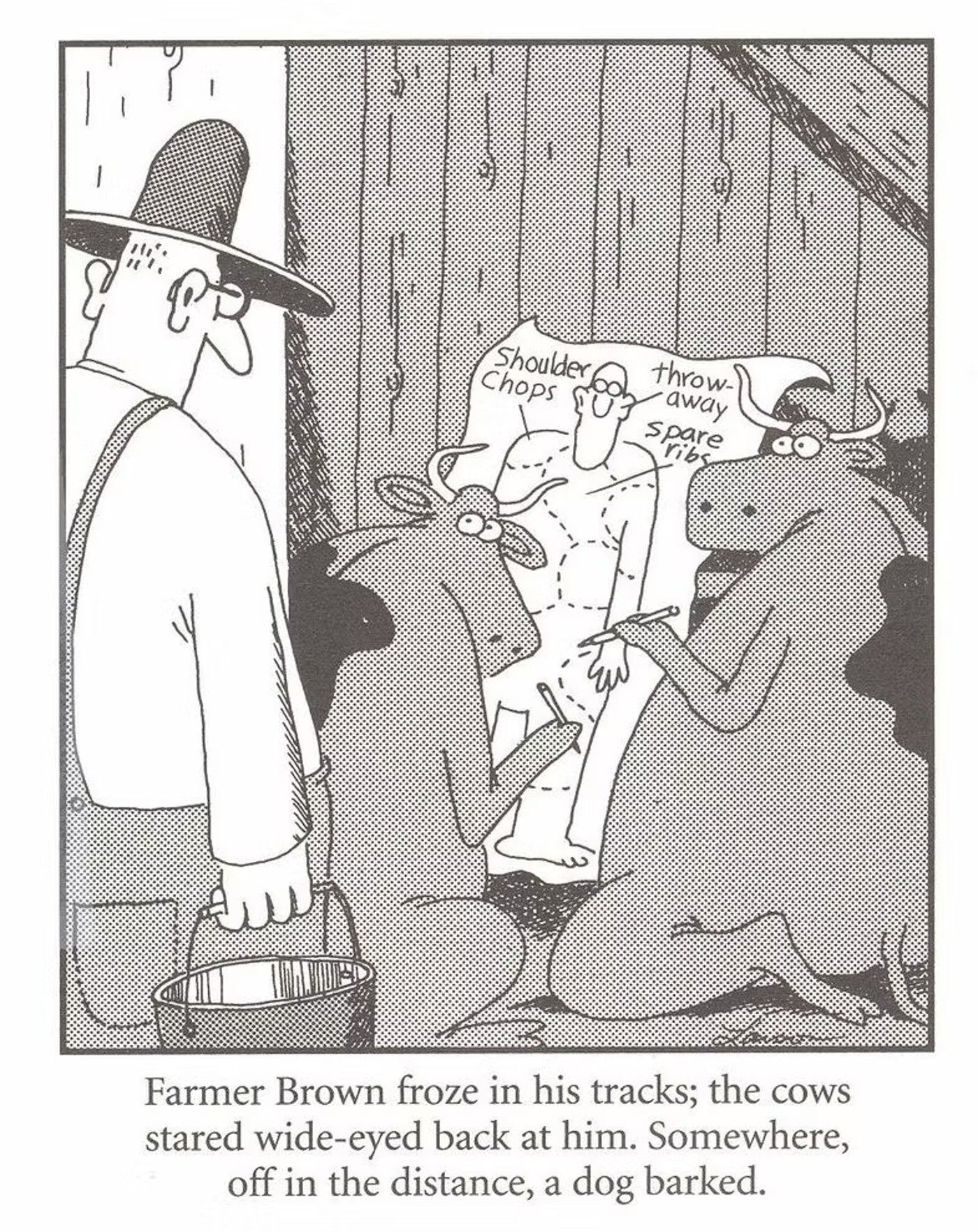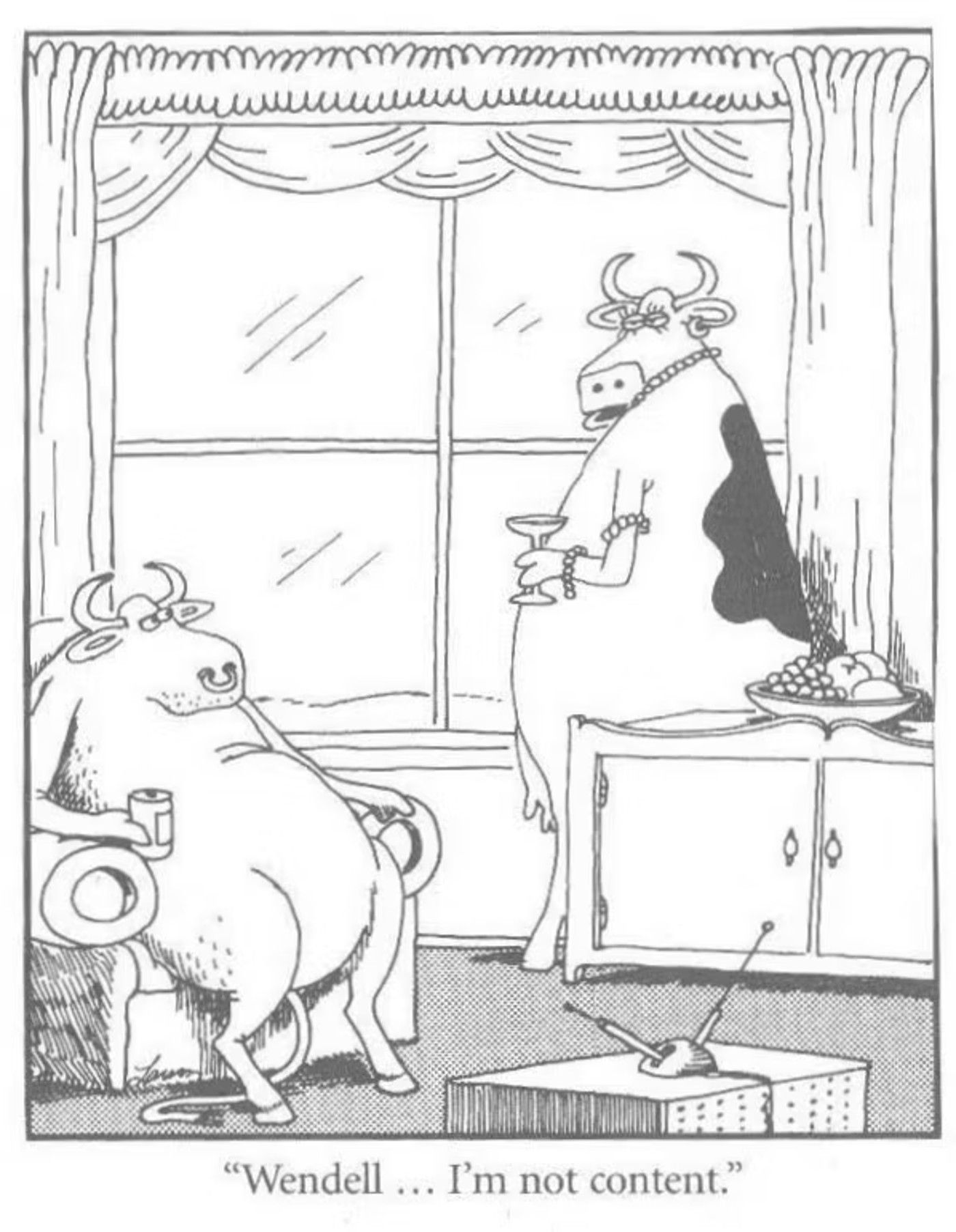The Far Side comic strip never featured recurring characters, as creator Gary Larson believed reusing characters limited his ability to make the funniest strip possible, but on occasion a character would be named, distinguishing them from the multitude of stock characters featured in the strip’s run. According to Larson, a random cow – and there were many random cows – could tell any joke without continuity hindering the gag.
Be it cows or cowboys, Gary Larson believed stock characters made telling a joke in a single-panel comic possible. The reader brings their opinion of how cows, dinosaurs, or knights act to the comic; the humor is created when The Far Side deviates from those expectations. The choice to name a character, seldom as it happened, immediately makes them stand out, and tended to elevate the joke in some way.
11 “Lucky Stiff”
Morgue workers react to a corpse having a winning lottery ticket in its pocket. The setting alone rank this up there with The Far Side’s darkest comics, but that only makes the punchline land harder. Ernie thinking the dead man is a “lucky stiff” is a classic play on words. Gary Larson often draws the literal definition of idioms, expressing how ridiculous the phrases actually are. There is no such thing as a lucky stiff, stiffs are dead. On top of making light of the term, “lucky stiff,” it lampoons the mundanity of one’s job making them jealous of anyone who doesn’t share their misery – even if that person is dead.
10 “Dance?”
The stranded on a desert island trope was often revisited by Far Side creator, but never with such well-dressed companions. The juxtaposition of the full jazz ensemble in their pristine white tuxedos and black ties compared to the two castaways in tattered clothing is only the surface-level comedy involved in this strip. As is often the case with Far Side strips, there are layers of humor. That many people inhabiting such a small island is another comedic layer. The male castaway’s apparent resignation to the circumstances is yet another, with his resigned use of the woman’s name, “Ms. Hollings,” taking the punchline to the next level.
9 “Man’s Best Friend?”
The dog calling its owner by name, Stan, hilariously puts man and beast on the same level. Another example of The Far Side’s multi-tiered humor, on top of the status-equaling nature of the encounter, this strip questions the age-old notion that dog is man’s best friend by having the dog express his desire for independence. The genius of Far Side comics is they often get funnier with subsequent readings, as fans discover a new layer to Larson’s genius. Here, the dog’s statement is amusing at first, but becomes laugh-out-loud funny as the reader’s imagination fills in the details of why the dog might want its own place, or what that might be like.
8 “Busted”
Placing animals in very human situations is a standard Far Side comedic maneuver. In this strip, the seriousness of a man caught in his infidelity is supplanted by the absurdity of anthropomorphic sheep in a fine dining establishment. There is no real estate in a single-panel comic for setting up a joke. In calling the betrayed sheep by name, Larson conveys a complex situation in just five words, explicating the predicament perfectly while also significantly increasing the absurd humor of the panel by further humanizing the sheep.
7 “The Cowboy Way”
Readers react to The Far Side’s stock characters by bringing preconceived notions to the table. If they see a dog, or a Viking, or a caveman, or in this case, cowboys, the reader expects them to act how they expect. This Far Side strip speaks directly to the general perception of how cowboys are perceived in the popular imagination. Frank goes against that accepted norm by crossing his legs, while his companions are manspreading around the fire. Frank’s defiance of gender stereotypes, as well as cowboy stereotypes, and his fellow cowboys’ discomfort, are perfectly encapsulated in a single line of dialogue – one that would not be as effective without Frank being named.
6 “Dang It, Monica!”
The text in a Far Side comic is usually concise not only because of the limitations of space in a single panel, because that is all the joke needs. In this strip, the opposite is true. The komodo dragon’s lengthy confession takes the reader for a ride. By the time he admits being a “filthy liar” it hits harder because the reader is invested in both the lizard and Monica, the tirade’s seemingly-bewildered target.That is when the laugh comes – as the reader realizes they became emotionally invested in the confession of a lizard. Gary Larson’s impeccable comedic timing is always on display in The Far Side, but the way he hooks his audience in this strip, while inevitably delivering the expected laugh, is next-level.
5 “Why? … Why?”
Dark comedy is a staple of The Far Side, and this is one of the darkest strips Gary Larson ever created. Larson perhaps avoided being drowned in hate mail for making light of suicide by having the victim be an often detested creature. The earnestness in the speaker’s cry is hilarious at the same time it is tragic, but only because it comes from a snake. If the strip was about humans there would be nothing funny about it. Larson ingeniously turned tragedy to comedy with a simple substitution of species. Using a snake allows Larson to double the darkness of the suicide by making the victim the literal cause of death, too. The comedy is certainly uncomfortable here, which was often the goal of The Far Side, and usually served to make the strip that much funnier.
4 “Until Jerry Pupates”
Anthropomorphizing insects is perhaps a bridge too far, but in this Far Side strip manages to fit bugs into an all-too-common human situation. Whether fans have been in the position where their parents disapprove of their significant other, most readers will remember disagreeing with their parents as teenagers. Getting readers to relate this closely with insects proves that Larson is a master cartoonist. Substituting of “pupate” for “graduate” may also be one of Larson’s most ingenious puns.
3 “Look At This, Etta?”
Gary Larson creates something fantastic in this common domestic setting in order to depict a common phrase in a literal way. Having another mouth to feed is a lament generally reserved for people with a baby on the way, but The Far Side takes it in a different direction. This gag relies heavily on the posture and expression of the man with the extra mouth. His relatively unperturbed expression and hands-on-hips posture looks like someone that is unhappy to find out their wife is pregnant, not like a person that just sprouted another mouth.
2 “Somewhere, Off In The Distance…”
The cows are finally revolting. Gary Larson uses cows in so many comics that this strip plays as a pivotal moment for all the Far Side cows, akin to a Rise of the Planet of the Apes moment for cows. If the comedy in The Far Side had to be boiled down to one thing, it would be Gary Larson’s talent for melding the serious with the ridiculous. The looks on the cows’ faces are funny enough, but it is even funnier when questioning whether they are they concerned about being caught planning to butcher Farmer Brown, or simply getting caught behaving so un-cowlike.
1 “The Discontentedness of Cows”
This is peak absurdity for a Far Side cartoon. Money won’t buy happiness, it’s true, but these cows appear to be living the high life and still it is not enough. The Miss Havisham of cows, replete with jewelry and cocktail in hand, tells Wendell she is not content, in a line of dialogue so ridiculous that it is brilliant. Larson bedecks the cows’ home with fancy window treatments and an ornate console. The bowl of fruit is the finishing touch to really drive home the fact that this cow has everything she could want – other than a bull that does more than sit in front of the television drinking beer.
This story originally appeared on Screenrant

